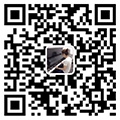教育行業(yè)是一個充滿挑戰(zhàn)和機(jī)遇的領(lǐng)域,其特點主要體現(xiàn)在多方面,包括教學(xué)方法的不斷創(chuàng)新、技術(shù)應(yīng)用的不斷推進(jìn)以及市場競爭的激烈程度。
,教育行業(yè)的特點之一是教學(xué)方法的不斷創(chuàng)新。隨著社會的不斷進(jìn)步和科技的不斷發(fā)展,教育理念和教學(xué)方法也在不斷變化和更新。傳統(tǒng)的教學(xué)模式逐漸被更加注重學(xué)生參與和互動的新型教學(xué)模式所取代,如項目式學(xué)習(xí)、問題解決式學(xué)習(xí)等。教育者需要不斷探索和嘗試新的教學(xué)方法,以適應(yīng)不同學(xué)生的需求和學(xué)習(xí)方式,提高教學(xué)效果。
,教育行業(yè)的特點還表現(xiàn)在技術(shù)應(yīng)用的不斷推進(jìn)。隨著信息技術(shù)的迅猛發(fā)展,教育行業(yè)開始逐漸融入了大數(shù)據(jù)分析、人工智能、虛擬現(xiàn)實等先進(jìn)技術(shù),這些技術(shù)的應(yīng)用不僅提高了教學(xué)的效率和質(zhì)量,還為學(xué)生提供了更加多樣化和個性化的學(xué)習(xí)體驗。例如,通過在線教育平臺和移動學(xué)習(xí)應(yīng)用,學(xué)生可以隨時隨地進(jìn)行學(xué)習(xí),而教育機(jī)構(gòu)也可以更好地進(jìn)行學(xué)生管理和教學(xué)評估。
,教育行業(yè)的特點還體現(xiàn)在市場競爭的激烈程度。隨著人們對教育質(zhì)量的要求不斷提高,教育市場的競爭也日益激烈。各類教育機(jī)構(gòu)紛紛加大對教學(xué)資源和師資力量的投入,不斷提升教學(xué)水平和服務(wù)質(zhì)量,以吸引更多的學(xué)生和家長選擇。同時,教育行業(yè)也面臨著政策法規(guī)、人才培養(yǎng)等方面的挑戰(zhàn),需要不斷提升自身競爭力,適應(yīng)市場的變化和需求。

配圖為廣州vi設(shè)計公司作品
教育標(biāo)志設(shè)計是一項重要的任務(wù),因為它們代表著一個教育機(jī)構(gòu)的形象和價值。在設(shè)計教育標(biāo)志時,需要考慮一系列要點,以確保它們能夠有效地傳達(dá)所需的信息,并產(chǎn)生積極的印象。
1. 符合教育機(jī)構(gòu)的理念和價值觀:
教育標(biāo)志應(yīng)該反映出機(jī)構(gòu)的使命、愿景和核心價值觀。設(shè)計師需要與教育機(jī)構(gòu)的管理層密切合作,了解他們的理念和目標(biāo)。標(biāo)志的設(shè)計應(yīng)該與這些理念和價值觀保持一致,以確保其在視覺上能夠代表教育機(jī)構(gòu)的核心特征。
2. 簡潔而富有表現(xiàn)力:
好的教育標(biāo)志應(yīng)該是簡潔明了的,能夠在瞬間引起觀眾的注意。設(shè)計師應(yīng)該避免過多的細(xì)節(jié)和復(fù)雜的圖案,而是選擇簡單而具有代表性的元素。這些元素可以是文字、圖形或符號,但它們必須能夠清晰地傳達(dá)教育機(jī)構(gòu)的身份和特點。
3. 考慮可用性和多樣性:
教育標(biāo)志通常需要在各種媒體和平臺上使用,包括紙質(zhì)印刷品、網(wǎng)站、社交媒體等。因此,在設(shè)計標(biāo)志時,需要考慮到不同尺寸和格式的適應(yīng)性。標(biāo)志應(yīng)該能夠在各種大小和背景下清晰可見,并且在不同的顏色模式下表現(xiàn)良好,以確保在各種情況下都能夠有效地展現(xiàn)。
4. 突出個性和獨特性:
,教育標(biāo)志應(yīng)該能夠突出教育機(jī)構(gòu)的個性和獨特性。設(shè)計師應(yīng)該通過獨特的設(shè)計元素或風(fēng)格來區(qū)分教育標(biāo)志,使其與其他機(jī)構(gòu)區(qū)別開來。這樣一來,標(biāo)志就能夠更好地吸引目標(biāo)受眾的注意,并樹立起教育機(jī)構(gòu)在行業(yè)中的獨特地位。
Education symbols play a crucial role in shaping perceptions, influencing decisions, and communicating values within the realm of educational economics and marketing.
Educational symbols such as logos of prestigious universities, accreditation badges, or awards symbolize quality and excellence in education. These symbols serve as benchmarks for students, parents, and stakeholders when evaluating educational institutions or programs. Institutions associated with such symbols often enjoy a competitive advantage in attracting students and funding.
Icons like educational seals, certifications, or endorsements establish trust and credibility in the eyes of the audience. When an institution displays these symbols, it signals compliance with certain standards, adherence to best practices, and commitment to academic integrity. Trust is essential in educational transactions, influencing enrollment decisions, partnerships, and collaborations.
Unique educational symbols contribute to brand differentiation and identity. Logos, mascots, and slogans help institutions stand out in a crowded marketplace, allowing them to carve a distinct identity and appeal to specific target demographics. Effective branding enhances recognition, loyalty, and affinity, driving enrollment numbers and fostering long-term relationships with stakeholders.
Educational symbols serve as powerful marketing tools, facilitating promotional activities and outreach efforts. Through strategic placement on websites, advertisements, merchandise, and social media, symbols convey key messages, evoke emotions, and attract attention. Well-designed symbols evoke pride and affiliation among students, alumni, and supporters, amplifying word-of-mouth marketing and community engagement.

業(yè)務(wù)咨詢 付小姐

業(yè)務(wù)咨詢 張小姐

總監(jiān)微信咨詢 付小姐